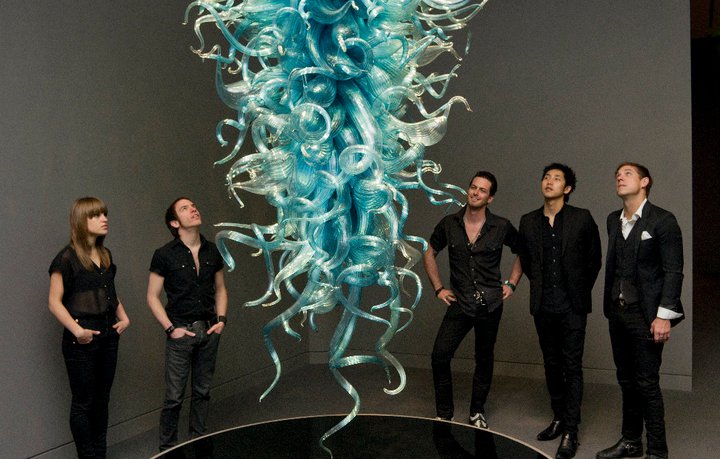If you told the average San Francisco resident 40 years ago that the art scene in the Bay Area would be gasping for life in 2015, they probably would have laughed in your face. But it is 2015, and that is the reality we are facing. The tech giants have moved in, and tension is building between the Silicon Valley community and its non-profit entities. In particular, arts organizations seem to be at an extreme disadvantage for a few reasons:
CREATE Lab: Creating Social Impact Through Empowering Communities
CREATE Lab creates multi-disciplinary learning experiences that allow communities to become technologically fluent. CREATE Lab’s novel combinations of visual arts and technologies provide a wealth of new potential tools to arts administrators and their organization. This article will introduce a few of the exciting projects that CREATE Lab is already testing in the Pittsburgh community, as well as access points for administrators and educators who are interested in implementing them.
Research Update: Crowd-Funding through Google
With the development of crowd-funding programs through companies such as Kickstarter, Indiegogo, and Patreon, artists have many new ways to generate both funding and visibility. Arts and culture organizations have a harder time competing with individual artists on these platforms. In an effort to assist these organizations as they try to change the world, Google now offers its own crowd-funding platform for nonprofit organizations: Google’s One Today.
American Association of Museums Trend Watch 2012
The American Association of Museums recently published a report titled Trends Watch 2012, Museums and the Pulse of the Future. According to AAM, the field of museology could beat to the rhythm of seven emergent practices in upcoming years. Namely, these are crowdsourcing, alternative social enterprises, public engagement, microgiving or crowdfunding, changing demographics, augmented reality, and new educational opportunities. Of these trends, crowdsourcing, crowdfunding, and augmented reality will be explored in detail as technology fuels their very existence while the arts nourish their popularity. Crowdsourcing

Museums of 2012 should not shy from “harnessing the crowd”, especially when that crowd is more than willing to engage in unique tasks and activities. The report cites examples such as the Smithsonian Museum, which asked the public to vote on “which examples of video games to include in its “Art of Video Games” exhibit. As the PSFK reports, even the New York Public Library sought help from the public in its effort to overlay historical maps “onto the open, modern-day map, drawing from the library’s expansive map database that includes everything from maps of building types for fire insurance purposes to agricultural maps of droughts.” The report mentions Wikipedians in Residence, Digitalkoot project, and the Children of Lodz Ghetto Project as other examples of engaging the online world in content publishing and editing, archiving (through gaming!), and even historical research.
For museums, crowdsourcing is a novel way to increase volunteering while capturing the interest of experts and community members alike. Yet, not all tasks lend themselves well to the phenomenon; the crowd is best utilized when tasks are fun, meaningful, or interesting, and require large amounts of individual input. Additionally, while crowdsourcing speeds up the pace and broadens the scope of projects, “it also increases the burden of oversight and quality control.”
Crowdfunding
When it comes to funding for the arts, not everybody (including the government) is willing to give a lot. But when a lot of people give a little, what emerges is the financially fantastic, win-win idea of crowdfunding. The report suggests that Kickstarter, Indiegogo, and Peerbackers can be used “to reach people who may never have heard of your museum and invite them to support projects ranging from acquisitions to exhibits to building expansions.”
 The report also points to the possibilities of mobile giving with the introduction of Google Wallet and Card Case. Another fundraising initiative noted is Philanthroper, a start-up that helps raise funds for non profits via “an e-mail each day featuring a 501(c)(3) organization that subscribers can choose to support with donations of up to $10.”
The report also points to the possibilities of mobile giving with the introduction of Google Wallet and Card Case. Another fundraising initiative noted is Philanthroper, a start-up that helps raise funds for non profits via “an e-mail each day featuring a 501(c)(3) organization that subscribers can choose to support with donations of up to $10.”
For a successful crowdfunding initiative, an organization needs to think beyond the incentive of tax deductible donations. The most successful Kickstarter campaigns involve people in their creation send them tokens of appreciation (often the end products themselves). Thus personalized, fun, and unconventional incentives are key to appeasing to the masses.
Augmented Reality
Reality limits the possibilities of what is, could be, and was. So augmented reality, in all its limitlessness, was introduced to help us imagine beyond what is. According to the report, “AR refers to a set of technologies that can layer digital elements—sound, video, graphics, even touch sensations—over real world experiences via mobile devices.”
 One of the examples noted in the report is Streetmuseum Londinium, an app developed by the Museum of London which lets visitors explore Roman London and “ provides soundscapes to accompany scenes of Roman life superimposed on the modern city and encourages users to brush away dirt by blowing into their iPhones, “excavating” virtual artifacts in the process.” Another example of AR, not noted in the report, but cool nonetheless was used by the Science Museum in London. For its exhibit, Making of the Modern World, the museum created an app using a 3D avatar of Top Gear host, James May, who explained the significance of the objects in the exhibition.
One of the examples noted in the report is Streetmuseum Londinium, an app developed by the Museum of London which lets visitors explore Roman London and “ provides soundscapes to accompany scenes of Roman life superimposed on the modern city and encourages users to brush away dirt by blowing into their iPhones, “excavating” virtual artifacts in the process.” Another example of AR, not noted in the report, but cool nonetheless was used by the Science Museum in London. For its exhibit, Making of the Modern World, the museum created an app using a 3D avatar of Top Gear host, James May, who explained the significance of the objects in the exhibition.
Augmented reality certainly opens up possibilities but as the report notes, there is a fine line between engaging visitors and overwhelming or confusing them. It also suggests that AR can be used to exhibit and exist beyond the walls of the museum. Layar, an app by The Andy Warhol Museum that lets “users to explore Pittsburgh and New York City through the eyes of Andy Warhol”, is one such boundary defying example.
Additional details and insight into all the other emergent practices can be viewed in the AAM report. While these trends may not necessarily define the future of museums, they certainly put them on the path to a new technological era. Museums, who says you can’t be both conservative and trendy?
Lessons from the Bronx
By now you may be aware of the Bronx Museum of the Arts' new ticketing initiative. If not, take a look at the Museum's Facebook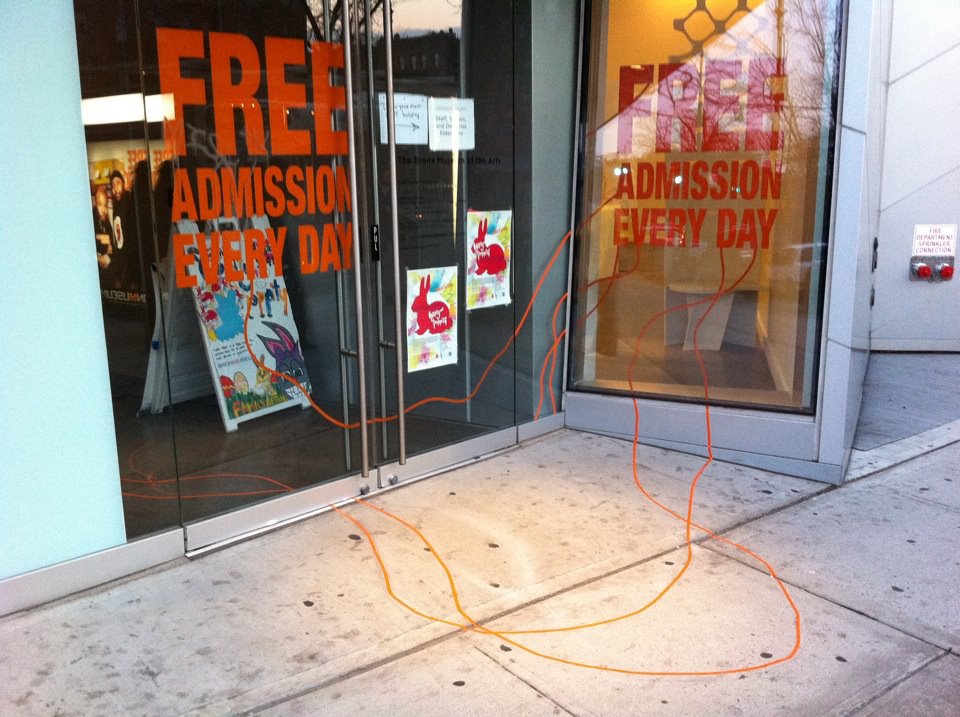 status from March 30th: "Starting today, the Bronx Museum of the Arts will be Free to all. Thursday through Sunday, FREE! First Fridays! FREE. Whether you're 8 or 88, FREE! Getting Here: B/D train to 167th St (Unlike the Museum, the train fare is not free)."
In celebration of its 40th anniversary, the Museum announced just last month it would offer free admission to guests-- this coming at a time when student discounts, twofer deals, good coupons, and gas below $3.99/gallon are at a premium. According to Museum Director, Holly Block,
status from March 30th: "Starting today, the Bronx Museum of the Arts will be Free to all. Thursday through Sunday, FREE! First Fridays! FREE. Whether you're 8 or 88, FREE! Getting Here: B/D train to 167th St (Unlike the Museum, the train fare is not free)."
In celebration of its 40th anniversary, the Museum announced just last month it would offer free admission to guests-- this coming at a time when student discounts, twofer deals, good coupons, and gas below $3.99/gallon are at a premium. According to Museum Director, Holly Block,
With our immediate community being the poorest per capita in the nation, and at a time when many are struggling to pay bills…we don't want anyone to have to use (admission costs) as excuse not to visit us.
It is because of a grant from the New York Community Trust that the museum is able to offer free admission to the public- though the grant only covers admission costs up to 15 months. The Museum is hoping to secure a more permanent funding source to be able to continue to provide free admission to the public after those 15 months.
Not only does this reduce barriers of entry for Bronx residents, New Yorkers, tourists, and artists, but it also benefits the museum community at large. Many museums have implemented similar free admission pilot programs and have reported varying results. It will be interesting to follow up with the Bronx Museum at the conclusion of the 15 month, free admission period to review its attendance numbers and demographics during that time.
While snooping around for more information on the Museum’s new pilot program, I stumbled upon two special offerings at the Museum. How did I NOT know about these programs?!
1) smARTpo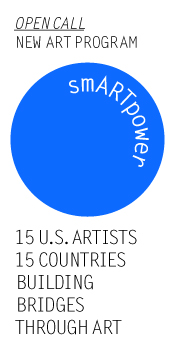 wer: In conjunction with the U.S. Department of State’s Bureau of Education and Cultural Affairs, the Bronx Museum administers this cultural diplomacy program. The program funds and provides travel opportunities for 15 U.S. artists to create and work abroad on a community-based art project. smARTpower supports “the development and implementation of community-based art projects that engage youth and other local residents, including artists. The projects are strongly encouraged to create a tangible legacy of the work accomplished through smARTpower in a variety of visual arts media…” The program is open to professional artists only with U.S. citizenship.
wer: In conjunction with the U.S. Department of State’s Bureau of Education and Cultural Affairs, the Bronx Museum administers this cultural diplomacy program. The program funds and provides travel opportunities for 15 U.S. artists to create and work abroad on a community-based art project. smARTpower supports “the development and implementation of community-based art projects that engage youth and other local residents, including artists. The projects are strongly encouraged to create a tangible legacy of the work accomplished through smARTpower in a variety of visual arts media…” The program is open to professional artists only with U.S. citizenship.
2) Artist in the Marketplace (AIM): Established in 1980, the program seeks to provide “networking opportunities for emerging artists residing in the New York metropolitan area" and to introduce "their work to a greater audience.” Thirty-six selected participants attend weekly seminars led by a faculty of specialists. Topics covered in these sessions “address areas of practical concern to artists including: career management and gallery representation; exhibition and public art opportunities; grant writing, copyright law, and marketing.”
It is a hopeful sign, especially in these financially trying times, when a non-profit arts organization remains so concerned with serving its constituents- accessibility for its local audience, professional advancement for its arts community, and greater cultural understanding in diplomacy efforts.
Cities Thinking Differently, Through the Arts
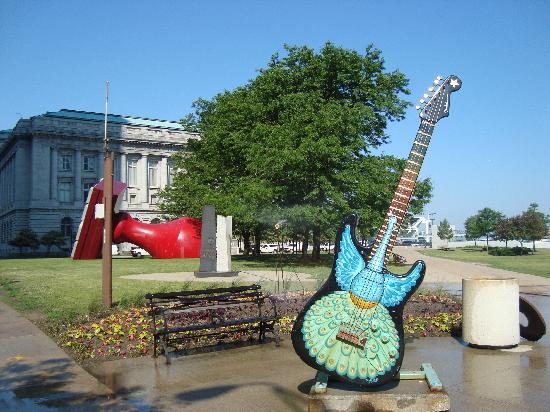 The past couple of years have been rough on America’s cities. The recession, job losses, budget cuts, and more people moving to the suburbs have all resulted in less tax revenue and a sense of unease about their future. Through these struggles, the cities have to consider questions like: What steps can be taken to foster economic growth? How can we become a player in an increasingly competitive global marketplace?
The cities of the Rust Belt, however, have had it a little worse. Unlike booming cities like Phoenix or Houston, cities like Detroit, Cleveland, and Pittsburgh are losing residents, with a fear that population losses will continue unless something drastic is done to “save the city.”
The past couple of years have been rough on America’s cities. The recession, job losses, budget cuts, and more people moving to the suburbs have all resulted in less tax revenue and a sense of unease about their future. Through these struggles, the cities have to consider questions like: What steps can be taken to foster economic growth? How can we become a player in an increasingly competitive global marketplace?
The cities of the Rust Belt, however, have had it a little worse. Unlike booming cities like Phoenix or Houston, cities like Detroit, Cleveland, and Pittsburgh are losing residents, with a fear that population losses will continue unless something drastic is done to “save the city.”
But instead of looking to traditional approaches like building an expensive sports stadium, performing arts complex or shopping malls, residents in cities like Cleveland and Detroit are taking a different route: embracing what Grist calls “Rust Belt chic,” the gritty, industrial, working class roots that embody and define the cities. One of the ways these cities are embracing this new dynamic is through the arts, and proving that having a thriving arts city doesn’t require investments or new arts venues: sometimes, all you need is to do is tap into what makes your city unique.
Much has been made about the struggles that face cities like Cleveland, Detroit, and Pittsburgh. This “Rust Belt chic,” first dreamed up by the “I Will Shout Youngstown” blog, based out of Youngstown, Ohio, can be best described by Governing magazine:
“A certain fascination with places that have fallen on hard times like the Rust Belt…has taken hold. Part of it is the scruffy, industrial look. It may also be a rejection of cities with gleaming condo towers, bistros and boutiques that were once so trendy yet now seem so frothy and fake.”
In other words, instead of trying to compete with the New York’s and LA’s of the world for visitors and potential residents, think different.
Cities all across the Rust Belt are taking this approach. But what many cities are doing is taking a low cost and high reward strategy towards economic development, which includes the arts community in a big way.
One example, as I wrote about in a recent post, is Detroit, who is embracing the arts community by providing tools and equipment to up-and-coming artists, fostering a sense of community for new artists moving into the city, even as thousands of residents leave every year. Detroit has the furthest to go of any city on this list, but businesses have started to move back to the city, young people are starting to move downtown, and its art scene has become home to increasingly diverse and eclectic artists, seeking to make a name for themselves.
Our home town of Pittsburgh is thriving (as any of us Pittsburgh residents would certainly tell you), and part of that is due to a thriving arts scene, which is frequently cited as one of the best things Pittsburgh has to offer. Much of the decay and abandoned buildings caused by the steel industry leaving decades ago has been taken over by the arts community and transformed into art spaces. What used to be an abandoned warehouse is now an art gallery; what used to be a factory plant is now a mixed use performance space.
It is because of this determination and grittiness, the drive to think differently and transform existing spaces, which makes Pittsburgh a perennial power in “America’s most livable cities” lists, often taking the top overall spot, as it did in 2010.
Cleveland is another case study. City leaders have struggled to come up with catchy slogans in an attempt to draw visitors, but local artists and arts venues aren’t focused on what Cleveland can do to “catch up” with other cities; they’re embracing what makes them different.
The Next American City recently looked at what it calls the “creative allure of urban grit,” focusing on cities like Cleveland. Because in cities like Cleveland and other across the Rust Belt, “you’re forced to accept that shit happens, and with that comes a freedom to creatively make sense of what’s happening. That’s art in a nutshell: the burn to make meaning out of failed plans and ruin.”
Some local artists are doing just that. The Next American City looked at Cleveland artist Amy Casey, whose paintings offer a unique and real look at the city. Housing vacancy and abandoned industrial plants a huge problem in Cleveland; Casey draws paintings where houses are connected together by ropes, or industrial areas are marked by decay.
One cannot help but to notice the economic strife and abandonment that has taken part in these cities; but while some would find such a sight depressing, others see inspiration. Casey’s paintings, and many others throughout Cleveland, seek to symbolize both the struggles it faces going forward, and the opportunity that awaits them.
Cities like Detroit, Pittsburgh and Cleveland all have many problems, and no one is here to suggest that the arts can save them on their own. But while all three areas, and dozens of others, create economic development plans and seek to spur investment and population growth to cities long forgotten by their neighbors, the arts is a way to provide a short-term boost to lift spirits, provide inspiration, and instill a sense of pride to communities.
We know it will be a tough and long road back for these cities. But at the same time, embracing what many call “rust belt chic” is a way for these cities to focus on what makes them different and unique, and offer a taste of what people can expect from these faded, but not yet broken, great American cities.
The 2012 London Olympic Games and the Role of the Arts
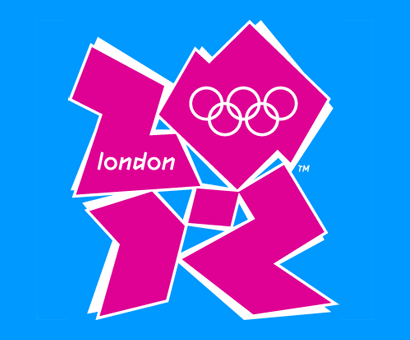 You may have heard: the 2012 Summer Olympics, the global 2-week spectacle that brings some of the best athletes from around the world to compete in over two dozen sporting events, is taking place later this summer in London, from July 27th through August 12th.
But what you may not have heard about are all the exciting and unique events that are intended to showcase the cultural and artistic diversity of London, expressed through art, through a series of exhibits, performances, galleries and shows. The hope, organizers say, is to leave a “lasting legacy for the arts in the UK,” and with millions of tourists visiting the city for the festivities, and billions watching around the globe, there may be no better opportunity for that kind of exposure.
You may have heard: the 2012 Summer Olympics, the global 2-week spectacle that brings some of the best athletes from around the world to compete in over two dozen sporting events, is taking place later this summer in London, from July 27th through August 12th.
But what you may not have heard about are all the exciting and unique events that are intended to showcase the cultural and artistic diversity of London, expressed through art, through a series of exhibits, performances, galleries and shows. The hope, organizers say, is to leave a “lasting legacy for the arts in the UK,” and with millions of tourists visiting the city for the festivities, and billions watching around the globe, there may be no better opportunity for that kind of exposure.
So while the games may receive the lion’s share of attention this summer, it is the British arts community that is hoping to have a more sustainable impact for years to come.
London’s art renaissance is comprised of two parts: the first, the London 2012 Festival, is taking place this year from June 21st through September 9th, and is largely centered on the Summer Olympics and the Paralympics that follows. It is part of a broader campaign, called the Cultural Olympiad, which is a multi-year effort that started in 2008 and is dedicated to showing visitors the best Britain has to offer in the worlds of art, dance, music, culture and more.
The London 2012 Festival is the more high profile project, and will be immediately noticeable to anyone who makes the trip to London for the games, as over 1,000 events are planned. Organizers are proclaiming that there are “10 million free opportunities to get involved,” and while the full list of events has yet to be revealed, there are already hundreds of shows and exhibits that have been announced. Perusing the website you can find such events as film festivals, comedy shows, concerts, carnivals, and fashion shows, some of which require tickets, but the majority of the events are free to the public.
One of the most notable events announced thus far is the Damien Hirst exhibition at the world-famous Tate Modern. In the world of film, a festival showing silent movies by home town director Alfred Hitchcock will be presented, alongside a live musical performance of the material.
My favorite part of the festival, however, and I imagine many others feel the same way, is the quintessential British playwright who will receive top billing. William Shakespeare will be in the spotlight, as the World Shakespeare Festival, which begins next Monday (April 23rd) and runs through September, will present almost 70 productions of Shakespeare’s plays in thirty different locations across the United Kingdom, including Scotland and Wales.
Organized by the Royal Shakespeare Company, organizers are calling it the “biggest celebration of Shakespeare ever staged,” with thousands of actors from around the world taking part in the project. In addition to the usual theatre presentations of Shakespeare’s work, there will be street performances and even amateur performances as well. The most ambitious part of the festival is the Globe to Globe project, where performers will act out all of Shakespeare’s plays, but each of them will be performed in a different language with different actors used for each performance.
It is important to remember that London is not only a sporting destination or the home to great museums and theatres: it is also what the Atlantic calls a “global cultural hub,” home to so many uniquely cultural people and neighborhoods. This cultural diversity will be on display through the festival as well, showcasing some of the best art from countries around the world.
One of the criticisms of the Cultural Olympiad and the upcoming London 2012 festival is the costs associated with such lavish productions, and estimates thus far for the total cost of both programs is about $154 million, no small amount for a country dealing with harsh austerity measures across the board over the last couple of years.
In addition to the overall government-wide austerity measures put in place by the British government, the games also come at a time of dwindling funds for the arts in not only just the UK, but all across Europe. I wrote recently about the impact that arts communities in Europe are facing, and while countries like Italy and the Netherlands have received the most attention, the cuts have hit the UK as well: as the New York Times reports, the British Arts Council saw its government funding recently reduced by 20 percent.
When the 2012 games were awarded to London, back in 2005, the economy was booming and expectations for both the games and the Cultural Olympiad were sky high, and lavish funding was promised. Of course, after the global economic recession hit in the fall of 2008, expectations were tempered, and both sides have adjusted accordingly.
One of the criticisms that critics have about the Summer Olympics is that it’s a sporting event that costs billions of dollars to produce, creates years of traffic problems and construction delays, and all the pageantry and spectacle that it comes with only lasts for two weeks, and then it’s gone forever (well, except for all the unused stadiums that come with it).
While the sporting part of the Olympics is only in town for those two weeks, it is the hope of organizers of both the London 2012 festival and the Cultural Olympiad that the impact that the arts community brings to the festivities, through art, dance, music, film, culture and so much more, has a lasting impact even after the games have ended and all the medals have been handed out. It may not be in place as long as a giant football stadium, but the impact on British culture is sure to last for quite some time.
Facebook, Alternative Bands and Acoustic Sessions @ the MFA
To me, this just about sums up the 21st century Millennial: Facebook invitations, exclusive access to acoustic sessions, alternative bands, 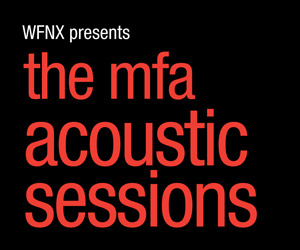 behind the scenes privileges, access granted only through social media and a little culture via the fine arts. To what pray tell could I be referring? Why, Boston’s Museum of Fine Arts’ (MFA) partnership with radio station WFNX, of course.
Since May 2011, the MFA Boston has been showcasing nationally acclaimed acoustic bands in its galleries. Each month, an alternative band and 35-50 lucky winners are selected to participate in the exclusive Acoustic Sessions series.
behind the scenes privileges, access granted only through social media and a little culture via the fine arts. To what pray tell could I be referring? Why, Boston’s Museum of Fine Arts’ (MFA) partnership with radio station WFNX, of course.
Since May 2011, the MFA Boston has been showcasing nationally acclaimed acoustic bands in its galleries. Each month, an alternative band and 35-50 lucky winners are selected to participate in the exclusive Acoustic Sessions series.
How does one get selected to attend? Here’s where the Millennial wins. The concerts are announced on the MFA’s Facebook page and live on WFNX Radio (tune in on 101.7 FM in the Boston area). Interested followers can submit an entry form on the MFA’s Facebook page or call in to the radio station to be selected.
How does it work? The MFA’s upcoming Acoustic Series concert on March 27th is advertised on its Facebook page in the following post:
The MFA and WFNX have teamed up to present some of the best alternative bands, live in the galleries and Kasabian plays next on March 27. You can only see them by “liking” us and entering to win tickets here or listening to WFNX.
According the program’s press release, the artists perform in various galleries- from the European Paintings to the Contemporary American Art room. Their performances are sound and video recorded. They are then shared online, both on the MFA’s Facebook page and WFNX’s webpage.
Just when you thought it couldn’t get any more Millennial friendly, the MFA throws in this added exclusive- the performing musicians’ participate in the Museum’s “Art We Love”
program. The musicians select their favorite work of art in the museum, explain why they chose it or its significance to them and are then photographed beside the work. The photographs are uploaded to the MFA’s Facebook page for all to enjoy
and explore, providing unique insight and exclusive information on the musicians.
It is a perfect example of how the collaboration between social media, the visual and the performing arts can enhance the public's artistic experience and engage even those difficult Millennials. Originally from the Boston area, I am proud to share the MFA’s innovative programming with those from away. But I am sure other museums and galleries are up to similar projects. What other museums and galleries have similar, or completely unique, social-media driven, collaborative programs?
TechSoup launches Annual Digital Storytelling contest!
Whether they know it or not, every organization has a story to tell. But sometimes, it just so happens that this story is lost amid the frenetic activities of day-to-day work, and soon finds itself sitting quietly in the old forgotten folder of organizational history. Well, the month of February is the time to retrieve that story and subject it to some digital editing. This is because TechSoup, an organization that enables non profits to achieve their mission through technological solutions, has decided that some stories are best told digitally!
Recently, TechSoup launched its Annual Digital Storytelling contest which, “combines professional instruction and friendly competition into a hands-on media-making project.” Over the month of February,“TechSoup Global will host a series of interactive events including Twitter Chats, live webinars, and trainings designed to help nonprofits produce a one-minute video or five-picture Flickr slideshow that tells the story of its organization.” Yes, a minute or five pictures is all you have!
http://www.youtube.com/watch?v=ccCwQeAo4l4
TechSoup will accept submissions through February 29th, and in March, a panel of judges will select the organizations with the very best videos and “take their digital storytelling to the next level.” Another interesting and fun aspect is the Audience Choice Award, where “winning and notable submissions will be screened in San Francisco and live-streamed online through SecondLife as a special “red carpet” event on March 28, 2012.”
TechSoup’s competition is beneficial to not-for-profit organizations because stories are one of the most engaging ways to raise awareness and gather support. If an organization has a compelling story, people will listen. Better yet, if an organization can narrate it digitally, people will not only listen but they will also share it! And if the vast and ever expanding YouTube community is pleased, it might just go viral!
So non profits, make haste! You have a month and at most, a minute!
The Rise of Online Philanthropic Contests
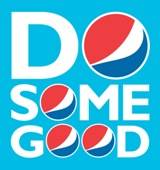 Over the past couple of years or so there has been a steady rise in the phenomena of competitive voting contests for not for profit organizations to receive grants for projects or operations. These contests are run by large corporations as well as not for profit groups. Examples of corporate contests take different shapes such as Pepsi's with the Pepsi Refresh Project which gives grants ranging from $5k to $50k based on competitive community voting toChase Community Giving which touts donations over $600 million dollars through Facebook contests. The National Trust for Historic Preservation has similarly put contests into place by granting to various historic restoration projects based on the number of votes they receive online.
Over the past couple of years or so there has been a steady rise in the phenomena of competitive voting contests for not for profit organizations to receive grants for projects or operations. These contests are run by large corporations as well as not for profit groups. Examples of corporate contests take different shapes such as Pepsi's with the Pepsi Refresh Project which gives grants ranging from $5k to $50k based on competitive community voting toChase Community Giving which touts donations over $600 million dollars through Facebook contests. The National Trust for Historic Preservation has similarly put contests into place by granting to various historic restoration projects based on the number of votes they receive online.
Whether these contests sit well with critic's ethical concerns or not, the volume of web traffic generated for the recipients, the donor organizations, and the organizations who compete but do not win is remarkable. According to Pepsi, the most recent contest in the fall of 2011 garnered more than half a million distinct registrations with over 3.5 million votes counted on the Pepsi site alone. If you aggregate this number with all of the site visits, social network hits, and emails then you have a truly noteworthy phenomena.
Why are people so invigorated by these contests? There are less time intensive ways to earn money in aggregate. One can point to the idea that the contest is a game and the competition itself is what people are engaging in more than the philanthropic cause. It could also be argued that the community effort of building a team to go online and vote for the cause for multiple days has an intrinsic value as well and that by the simple act of building this team you are building and drawing constituents deeper into the arts community.
As these online contest continue even more organizations are starting to do them. The Humane Society recently used a online photo contest to raise hundreds of thousands of dollars, the Case Foundation has been running a voter based contest for years, and American Express has also run contests in the past.
The following are some tips that have been gleaned from articles and criticism of various contests mentioned previously:
1) Make sure that the contest aligns with your mission. By diverting resources for a potential pie in the sky pot of money you can detract from your organization's true work.
2) Ask what your organization can gain from competing for these pots of money? Set forward goals of community building and identify volunteers to assist with these aims.
3) If you are going to market this to your patrons identify your budget for staff time and delegate a reasonably proportional amount of money to pursue getting the word out.
4) Don't start mid-steam. Almost all winners of these contests have strong starts and once you are behind in the voting it is hard to keep up. If you see a contest in progress that you would have liked to take part in simply put it on your calendar for an effort next year as your opportunity may all ready have passed.








